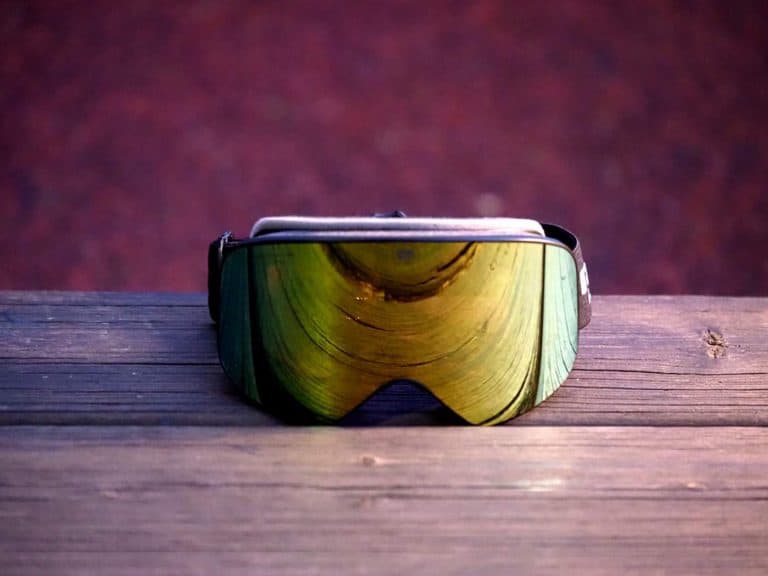

Image after application of Brightness & Contrast edit The Contrast slider was set to a very high 90%. The Green B&W Filter, though not as commonly used as other B&W filters (Neutral, Yellow, Orange, Red, and Green on OV3), was used to enhance the separation of the green foliage of the image. This is the main tool used for the conversion. The Monochrome & Sepia tool converts the image to a Monochrome or Sepia tone with an added selection of colored B&W Filters, Picture Tone, and a Contrast slider. Image after application of Monochrome & Sepia edit The strength setting was set slightly lower than the automatic value. The Auto Tone Correction tool automatically sets the darkest value and the highest value and then uses a slider to adjust the brightness scale of the mid-tones between the two points, used to give a flat or under-exposed image a bit more punch. The Edit menu, which lists all edit tools is displayed on the right of the screen. Once in OV3, double-click the image to open it in the Image Edit Window. Let's have a look at how the sample image is post-processed with these tools. The following example looks at a simple 5-step workflow to get you going on the right track and one which you can further develop as you increase your knowledge and skills of using OV3. The masthead image above is the completed version which started off as a color JPEG image as seen on the right here.Ī much simpler solution can be achieved by reducing the color saturation of an image to a value of -100 using the Hue & Saturation tool.īoth methods may still end up with a flat and lifeless-looking image that needs to be enhanced with other edits. Some are more effective than others, with equally varying results.ĭifferences between the various methods are usually explained in terms of visual appeal or the ability to blend the various color channels to emulate traditional B+W filters.įor those who have access to the software, Olympus Viewer 3 (OV3) is just as good to start the understanding and learning of black and white, and as an off-shoot, sepia-tone conversions.įor the JPEG image, B&W conversion is mainly done with the Monochrome & Sepia tool in Image Edit Mode.
#Yellow box frame in olympus viewer 3 software#
There are different approaches to this method, available even within the same software suite. This article is mirrored in Italian at and Overview On the digital photography front, one of the methods of getting a good digital B&W (black and white) image is to first capture the image in color and then do a grayscale conversion of the image through post-processing.
#Yellow box frame in olympus viewer 3 archive#
On the other hand, aiming through the very small viewer can be a problem if you wear glasses – I find it easy to exaggerate parallax and cut details.Īnd, among many others strange details it produced 24x37mm frames – this means that, whilst gaining a little on panoramas, you have trouble with archive sleeves and scanning masks.īut, you see, Zeiss Ikon didn’t like simple things… A selection of photosĬrisp contrast on panoramic and architecture, but beware the tiny viewfinder!ĭespite an unusual grip, allows quick shotsĮasy to carry in office bag, to be there when you need itġ/500s from a moving vehicle – not so bad With a wrist strap, it’s good for street & candid photo, even without aiming. Second, it’s small, compact, and reliable, with a bright Opton Tessar 45/2.8 (although possibly not the best Tessar I have used). It’s nice to even just to look at, or to show around as a vintage jewel. One of the most elegant cameras of all time in my opinion. So why do I love the little one? First, it’s pure beauty. … and in this picture, near its fat aunt Ercona – a camera that is same size of Oliver Clarke’s (RF) 524/2. In these image, you can see its size, near some other small cameras… The circle is closed, and it’s a new love for me. So, after more than fifty years and fifty cameras, I met the Contina’s elder sister, the Ikonta B 522/24 the last and smallest of its name. I looked at the Minox 35, but wanted something more mechanical. This included falling in love with gigantic but pocketable Erconas, but I was always looking for something really compact.

Then at some stage, I had a harsh case of G.A.S. My first real camera was a Canon AT1, so I started using almost only Canon FD kit.

It’s still good now: but it became impractical and out of fashion when I wasn’t a teen anymore. It was so cool in late-50’s chrome, the no-bellow look, the extra-wide viewer, fully manual. The first camera I remember was my Dad’s Zeiss Ikon Contina Ic.


 0 kommentar(er)
0 kommentar(er)
